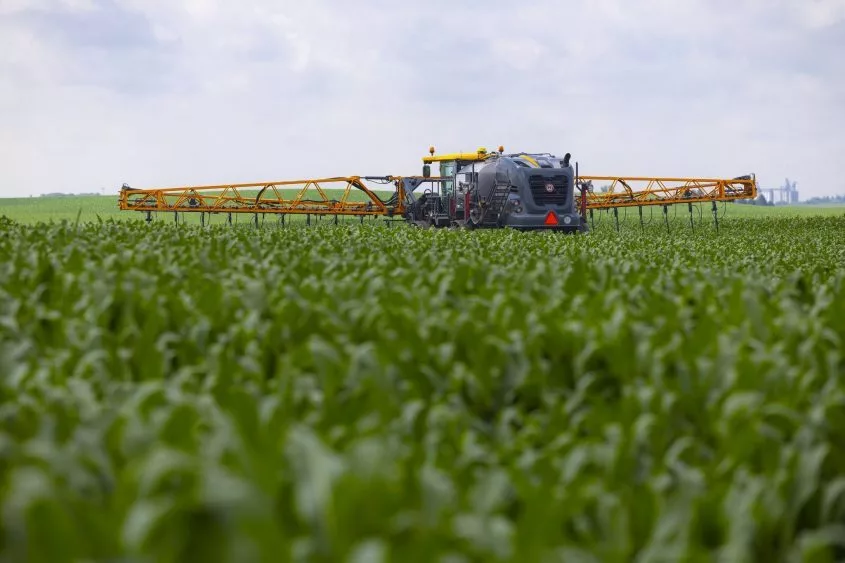Variable weather conditions and nitrogen loss remain top of mind for many farmers across the Midwest. Understanding nitrogen management techniques is vital for maximizing efficiency and optimizing yields.
One of the most challenging aspects of successfully managing nitrogen is simply the fact that not all of it may reach the crop. Under prolonged wet field conditions and/or warm temperatures, nitrogen can be lost through leaching, denitrification or volatilization. Globally, less than half of nitrogen applied to cropland actually reaches the crop. There are steps growers can take to measure nitrogen losses, such as testing for volatilization losses.
Nitrogen stabilizers have been widely tested and have proven effective at increasing soil nitrogen retention. Because nitrogen loss risk is always present, growers should take appropriate precautions to reduce loss.
Bill Long, a Pioneer field agronomist, recommends reviewing key factors from 2024 including yield maps, soil tests and aerial imagery to assess performance and pinpoint problem areas. One key indicator of nitrogen deficiency in corn crops is canopy health, particularly during early grain fill.
Long said the corn crop should maintain at least one green leaf below the ear for each of the four weeks of grain fill. If corn is dying from the bottom up, rather than the top down, that suggests problems.
The 2024 growing season presented challenges in many regions. In northern Iowa, for example, above-average soil temperatures early in the year accelerated nitrogen conversion from ammonia to nitrate, making fields more susceptible to leaching when heavy rains fell.
“Much of the fall- and early spring-applied anhydrous ammonia had already converted by the time the rain hit,” Long said. “Liquid UAN was also at risk for leaching.”
In-field nitrate testing in early June showed that many fields fell below the critical 25 parts per million thresholds. “The takeaway is that the 4Rs — right source, right rate, right time and right place — are as important as ever,” Long emphasized.
A 2024 trial in Iowa showed that corn planted on May 19 with nitrogen applied in late June avoided early season nitrogen loss. The study, conducted on 100- to 113-day hybrids at populations of 32,000 and 36,000, found yield increases of 7% when nitrogen was increased from 100 to 150 pounds per acre, and another 6% gain up to 180 pounds.
“Even with delayed application, we saw clear yield responses to additional nitrogen,” Long said.
Post-season stalk nitrate testing provided further insights. In 21 fields across three counties, 247 pounds of applied nitrogen yielded an average of 241 bushels per acre despite most stalks testing below the 700 parts per million sufficiency threshold.
“It’s a reminder that corn is resilient, but we still need to fine-tune nitrogen timing and placement,” Long said.
Study Reveals Strategies to Improve In-Season Nitrogen Efficiency in Corn
A three-year, multi-location field study across the U.S. and Canada emphasized the importance of application timing, product type and weather conditions in reducing nitrogen losses through volatilization. The study’s findings offer several practical recommendations for corn growers looking to maximize in-season nitrogen use efficiency:
- Use UAN over urea when volatilization risk is a concern.
- Use urease inhibitors with surface-applied urea, particularly later in the season.
- Apply to dry soil when possible, and time applications ahead of a forecasted heavy rainfall (more than 3 inches over 3 weeks).
- Avoid light rainfall events following application, which can increase volatilization.
- Soil texture and type should be a component of any nitrogen strategy, as coarse soils behave differently than fine-textured soils.
“Ultimately, good nitrogen management is about adapting, both to your field’s characteristics and to the season’s unpredictability,” Long said.





